Perfect Regions of Italy for Exploring by Car
There’s never been a better time to get behind the wheel and explore the Italian peninsula by car. Whether you’ve been to Italy before or are planning your first trip, including a rental car in your travel package is an excellent way to get in touch with the authentic side of Italy. While not all parts of the country are easy for visitors to navigate on their own, there are certain areas that are best explored by car. From verdant vineyards to countryside scenes and coastal escapes, let’s take a virtual road trip through Italy.
1. Palladian Villas and Wine Testing in Veneto Region
Though the most well-known city in Veneto is Venice, this northeastern Italian region is filled with many other treasures worthy of a spot on your bucket list. From history and culture to food and wine, Veneto is a destination our travelers fall in love with year after year. In addition to major cities, such as mesmerizing Verona, there are two distinct parts of the region that offer truly unique experiences for those traveling by car.
First and foremost, Veneto preserves the legacy of native son Andrea Palladio, a revered sixteenth century architect. Drawing inspiration from Ancient Greek and Roman architecture, Palladio’s distinct style influenced countless other architects in Europe and North America over the centuries. Today, the city of Vicenza and 24 Palladian villas in the Veneto region are collectively a UNESCO World Heritage Site.
In Vicenza, our expert local guides can’t wait to share the majesty of the famed Teatro Olimpico and other Palladian palaces and villas, such as Palazzo Chiericati, with you. After exploring the streets of Vicenza, continue your voyage along the banks of the Brenta River, which are dotted with Palladian villas and other villas commissioned by the Venetian aristocracy over the centuries. Your guide will point out the unique characteristics of each structure and explain the unifying elements of the Palladian villas, such as white columns, monumental staircases, and pediments.
One unforgettable way to take in the beauty of Palladio’s architecture and the surrounding scenery is to enjoy a cruise along the Brenta River. For true aficionados, it’s even possible to spend the night in a Palladian villa surrounded by the wondrous designs of one of Italy’s most influential architects.
Another local claim to fame is Veneto’s extensive wine-making tradition. From Soave to Valpolicella, there are several wine areas tucked away in the region’s hills that are just waiting to be explored. One of the most famous is located in the province of Treviso between Conegliano and Valdobbiadene. Referred to as the Prosecco Hills, this area is the birthplace of Italy’s most beloved sparkling wine.
Declared a UNESCO World Heritage Site in 2019, the dramatic scenery of the Prosecco Hills — punctuated by steep slopes and tapered ridges — is truly a sight to be seen. Amongst these landscapes, travelers can cruise along the Strada del Prosecco (Prosecco Road), which extends over 55 miles and connects the area’s centuries-old wineries where unforgettable wine tastings await. Get to know the winemakers themselves as they let you in on a few of their secrets. Along the way, there’s no shortage of picturesque countryside villages to explore from historic Collabrigo to Refrontolo, which is renowned for its ancient water mill that is still in use.
Much like its wine, Veneto is a region meant to be savored and experienced at a slower pace.
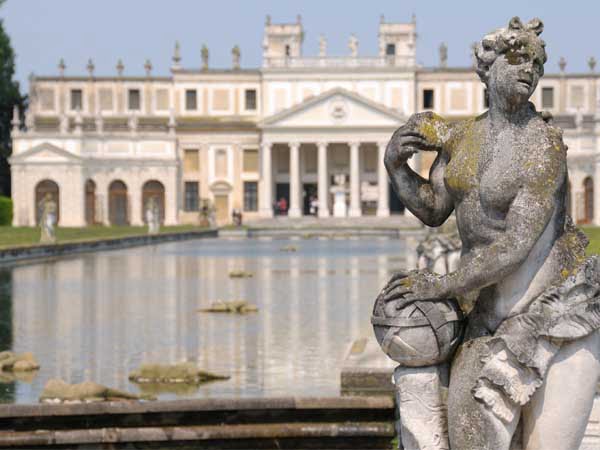

2. Wild Coastal Scenery and Etruscan Villages in Maremma
Italy’s Tuscany region typically conjures up images of rolling hills covered with vineyards and cypress trees. While those parts of the Tuscan countryside are certainly alluring, the region is home to varied landscapes, with some of the most internationally underrated found in the Maremma area. Located in the southern part of Tuscany, Maremma extends along the coast of the province of Livorno into the northern part of the Lazio region and ends in the province of Viterbo.
Mainly visited by Italian and European travelers, Maremma’s rugged natural beauty remains largely untamed. The landscape, once virtually uninhabited marshland, is now known for its protected natural areas and beaches favored by the locals. Visitors may enjoy hiking through the parks with a knowledgeable nature guide and learning about the local butteri, horseback herders native to Maremma, of which only a small number remain.
Quite a few of the towns in the Maremma area can trace their origins back to the Etruscans. This millenary history is best explained by someone who grew up in the area, has studied its past extensively, and knows these enchanting villages carved into tuff rock like the back of their hand. With the assistance of a local guide, you’ll have the opportunity to admire fascinating towns tucked away in the countryside that might have otherwise been missed.
A few examples include Saturnia, which is characterized by its historic hot springs, and Pitigliano, which is home to Etruscan ruins, medieval and Renaissance architecture, and a historic Jewish community. Other must-sees include the charming cliffside town of Sorano, the Etruscan tombs of Tarquinia, and Viterbo, which hosted the papacy for part of the thirteenth century.
Among the most unique examples of architecture in the area is Villa Farnese. Located in the province of Viterbo, this Renaissance palace dominates the surrounding countryside and features a remarkable pentagonal structure. Surrounded by lush gardens, the interior is home to detailed frescoes and grand staircases.
While visiting Maremma by car, travelers have the opportunity to stay in authentic countryside accommodations. From farmhouses to country estates, these historic structures surrounded by gardens or even vineyards are the best way to connect with the friendly locals and truly appreciate the natural surroundings.
For an unmatched mix of culture, ancient history, and natural beauty, look no further than the Maremma area; and, with a few extra days on hand, Tuscany’s iconic landmarks, such as Florence, Siena, and the Chianti area, can be worked into the same itinerary.

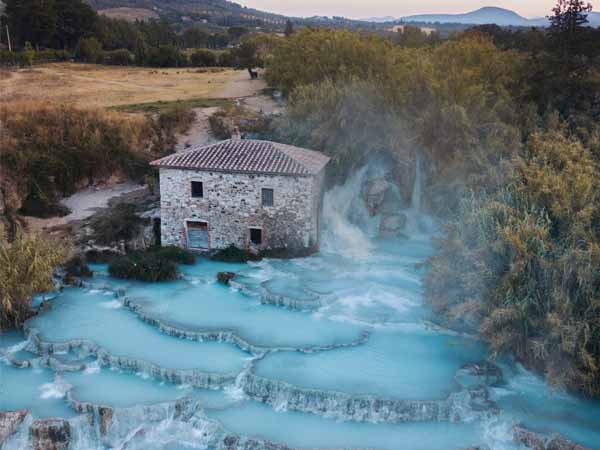
3. Rolling Hills and Historic Castles in Marche
A region of cliffs, beaches, hills, and mountains, Marche’s natural scenery is incredibly varied. We’ve touched on the incomparable beauty of the hilltop city of Urbino before. Known for its Renaissance architecture, the birthplace of Raphael perfectly embodies the rich history and undeniable appeal of the Marche region. And yet, Urbino is just one of the region’s many pearls.
With the Apennines to the west and the Adriatic Sea to the east, the Marche region is defined in part by the nature found within its borders. The interior territory is primarily composed of mountains and hills with stunning natural parks and reserves, such as Monti Sibillini National Park and part of the Gran Sasso and Monti della Laga National Park. Tucked away in the hills are small medieval towns full of charm, such as Corinaldo, which is renowned for its defensive walls and undulating streets that make it one of the most picturesque villages in all of Italy.
Along the coast, Parco del Conero amazes visitors with its rugged cliffs and tranquil bays. Hiking trails lead to the summit of Monte Conero where jaw-dropping views of the coast can be admired. Among the principal coastal cities are Pesaro, the hometown of opera composer Gioachino Rossini, and Ancona, the lively capital of the Marche region.
The Grotte di Frasassi, or the Frasassi Caves, are one of the most noteworthy natural wonders in the region and among the most extensive cave systems in Europe. During a guided tour of the Frasassi Caves, travelers can admire wondrous stalagmites, stalactites, a crystallized lake, and the captivating Ancona Abyss, a large cavern that reaches a height of 656 feet. It is estimated that the natural phenomena in the caves took over 1 million years to form.
The Marche region as we know it today has been greatly shaped by its past. The territory once served as the frontier of the Holy Roman Empire, and, as a result, the countryside is dotted with historic castles and defensive structures. Among the most renowned is the thirteenth-century Castello di Gradara (Gradara Castle), which served as the setting for the tragic story of Paolo and Francesca featured in Dante’s Divine Comedy.
Growing up, our guides from the Marche region played in the shadow of the Gradara Castle and today share their local insight with those who visit. Characterized by imposing walls and panoramic ramparts, the castle watches over a medieval village and offers stunning views of San Marino and Rimini. Other striking castles worthy of a stop during a road trip through Marche include the well-preserved Rocca di Mondavio and Rocca Ubaldinesca, which is perched above the Foglia River.
Though not as well-known among international travelers, the Marche region offers unparalleled and authentic experiences amid nature and history that will not disappoint.
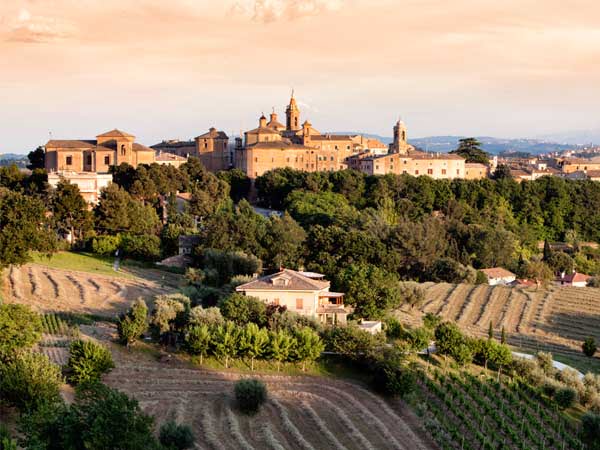

4. Charming masserie and whitewashed towns in Apulia
With a gorgeous coastline, crystal blue waters, vibrant cuisine, and a rich history that dates back to the Ancient Greeks, Apulia is quickly becoming one of Southern Italy’s most desirable travel destinations. Located in the heel of Italy’s boot, this land rich in culture and traditions seems suspended in time.
From the lush countryside to the sparkling waters of the coast, Apulia offers incomparable experiences that awaken all the senses. As you drive through the winding roads of the region, be sure to stop in one of the traditional farmhouses native to Apulia. Known as masserie, these stone structures have stood the test of time. Originally constructed as rustic abodes for local farmers, today some masserie have been given upscale renovations, while others appear as they did centuries ago. Most are surrounded by typical Apulian countryside scenery with endless rows of ancient olive trees and a unique reddish soil dominating the landscape.
The masserie lie at the heart of Apulian culture offering once-in-a-lifetime opportunities. For a delightful and highly authentic experience, our travelers to the region might choose to spend a few nights in a masseria. If you prefer to stay in one of the region’s charming towns or along the coast, you could still visit a masseria to participate in unique local experiences, such as a hands-on cooking class led by a local nonna eager to share the culinary traditions that have been part of her family for generations.
Apulia’s charm also lies in the numerous captivating whitewashed towns that would be right at home in a fairy tale. From Foggia in the north through Locorotondo and Ostuni down to Otranto and Gallipoli, it’s possible to cross the majority of the region while admiring the crisp, white structures of each town. Though Ostuni is officially known as “The White City,” each of these destinations is defined by stunning white buildings that stand out against the background of the blue sea or verdant countryside.
As for food, we’ll guide you through the region’s best vineyards and olive groves where high quality wines and olive oil have been produced for centuries. Learn about the traditional processes passed down from generation to generation directly from the locals themselves. Listen as master winemakers and olive oil producers share the secrets of their craft with great pride.
Don’t miss the chance to literally break bread with the locals as you taste pane di Altamura, or Altamura bread. Hailing from the Altamura area in the northern part of Apulia, this historic bread is made following set protocols that define the specific type of wheat and production process. The result is a fragrant loaf of bread with a thick crust and a soft interior.
Whether you choose to stay in a countryside masseria, one of the stunning white towns, or a coastal resort, the Apulia region — one of Southern Italy’s brightest gems — is sure to leave a lasting impression.

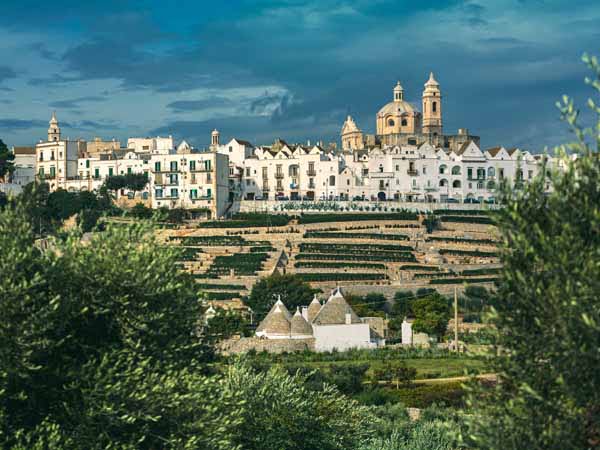
5. Seaside paradises and pristine countryside in Sardinia
The enchanting island of Sardinia beckons to those who prefer to take the path less traveled. While the tourism infrastructure found in other parts of Italy isn’t present in the majority of the island, it’s precisely Sardinia’s untouched nature that makes this region attractive to travelers with an adventurous spirit.
If beach time and relaxation are your priorities, drive along the Costa Smeralda, or Emerald Coast, which is positioned in the northeastern part of the island. This glamorous area is home to upscale resort towns, such as Porto Cervo. The clear blue water and white sands combined with elegant restaurants, bars, and clubs have attracted the jet set and celebrities from all over the world for decades.
To truly get in touch with the local culture, be sure to venture into the rustic countryside. Though Sardinia is the second largest island in the Mediterranean, its sparse population results in a wild landscape largely free from the influence of man. Nature lovers will enjoy hiking their way through the hills and mountains of the island’s interior. You can also delve into Sardinia’s past by visiting one of the numerous nuraghi scattered throughout the countryside. These prehistoric stone structures date back to the Bronze Age and have become a symbol of the island.
During your time in Sardinia, don’t miss the chance to stay in an authentic agriturismo, which is a modest accommodation set on the grounds of a working farm. Here, the locals will be happy to show you how products such as cheese are still made following centuries-old traditions. There’s no better souvenir to take home with you than a small bottle of olive oil or vinegar made with care by your new friends.
Whether you come for the history, the beaches, the scenery, or all of the above, Sardinia is a place that remains part of you long after you’ve left.
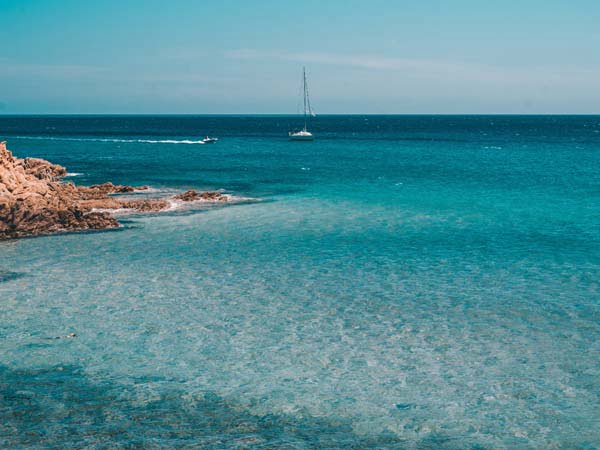
Taking the time to explore Italy by car allows travelers to set their own pace and fully immerse in the culture, history, and scenery of a particular destination. Imagine enjoying a special countryside picnic or having unlimited stops to capture those special moments and stunning sceneries on camera. If you’re an adventurer who enjoys a bit of spontaneity, traveling through Italy by car can offer unique opportunities that other methods of transportation do not. After learning about some of Italy’s best regions to discover by car, we hope you’ve found some new inspiration for your next road trip through Italy.